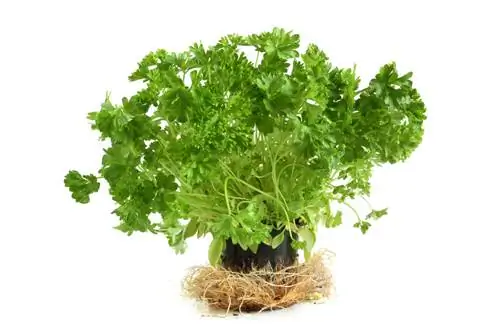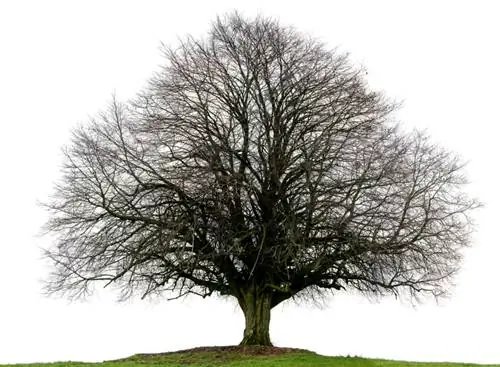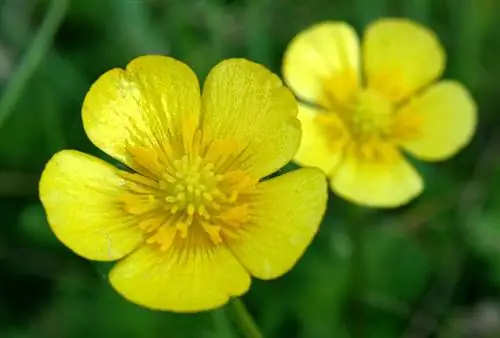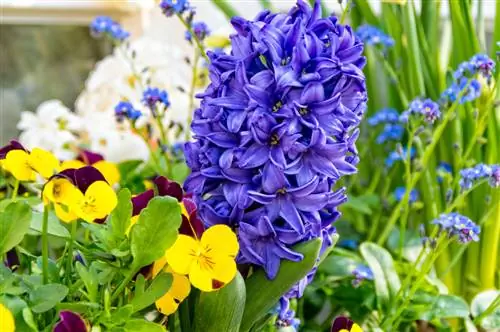- Author admin [email protected].
- Public 2023-12-16 16:46.
- Last modified 2025-06-01 06:02.
Whether in a pot as a balcony plant, in the front garden or elsewhere, primroses are among the most popular spring flowers. If you want to enjoy them for a long time, you should know about their features and requirements. Here are the facts about these flowers.
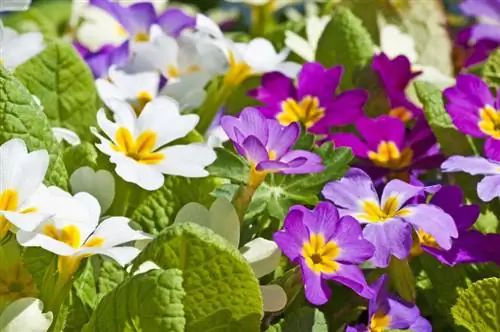
What are the characteristics and requirements of primroses?
Primroses are popular spring flowers from the Primulaceae family that bloom from December to April. They have a rosette-like shape, are summer green and thrive in partially shaded locations. Easy to care for with regular watering, fertilizing and removing wilted flowers and leaves, there are around 550 species of primrose in different colors.
The primrose short and sweet at a glance
- Plant family and genus: Primulaceae, primroses
- Latin name: Primula
- Origin: Asia and Europe
- Growth: low, herbaceous, ground-covering
- Foliage: rosette-like, summer green
- Flowering period: December to April
- Flower: different colors depending on the species and variety
- Location: sunny to slightly shady
- Soil: permeable, slightly acidic, nutritious
- Care: remove wilted flowers and leaves
- Propagation: sowing, division, root cuttings
A wide spectrum - something for every taste
The primrose genus includes around 550 species and numerous varieties. These plants are known and valued primarily as ornamental plants. Their multifaceted appearance means that there is something for every taste.
The primrose is native to the entire northern hemisphere. In Europe it prefers to inhabit mountainous regions. It can also often be found in flower beds and on balconies. As a perennial, it can be cultivated outdoors and in pots.
The exterior: growth pattern, leaves and flowers
Primroses grow between 10 and 30 cm high and up to 15 cm wide. They are usually deciduous plants that form fibrous roots underground. A basal rosette of leaves forms on the surface. The individual leaves can be linear, broadly lanceolate or obovate, smooth-edged or toothed, and glabrous or delicately hairy.
The flowers form between December and January. They can be present until spring. Each species has hermaphrodite, radially symmetrical flowers with a double perianth. The flowers can be white, yellow, orange, pink, red, purple, magenta, blue or multicolored.
Demands of primroses
Primroses prefer to grow in a partially shaded location with temperatures between 14 and 18 °C. In terms of care, all you need to do is water primroses, fertilize them every 2 to 3 weeks and cut off the spent flowers and old leaves.
Tips & Tricks
Buy primroses in bloom. Then you will know exactly whether you like the flowers.


